Michigan insects in the garden - Season 2 Week 5: Predatory stink bugs
They may not smell good, but they have good taste.

Stink bugs are so named because of their ability to release droplets of aromatic compounds that smell and taste bad to predators. They only emit theses substances when they sense that they are being threatened or endangered. This ability is hardly limited to insects in the stink bug family (Pentatomidae). In fact, many other insects emit odorous defensive chemicals, including leaf-footed bugs (Coreidae), darkling beetles (Coleoptera, Tenebrionidae) and many caterpillars (e.g., Papilionidae).
Stink bugs can generally be distinguished from other insects by their shield shaped body and their long straw-like mouthpart which they keep tucked under their bodies when it is not in use (Photos 1, 2 and 3). Stink bugs might be mistaken for beetles (Coleoptera) because both sometimes have a shiny carapace. However, beetles don’t have a straw-like mouthpart and don’t typically have their wings sticking out over the back of their abdomen (Photo 1). The predatory stink bugs can be differentiated from the plant feeders, by shape and length of their mouthpart. Plant-feeding stink bugs have a long slender mouthpart (Photo 2), whereas the stink bugs that feed on insects have a short stout mouthpart (Photo 4).
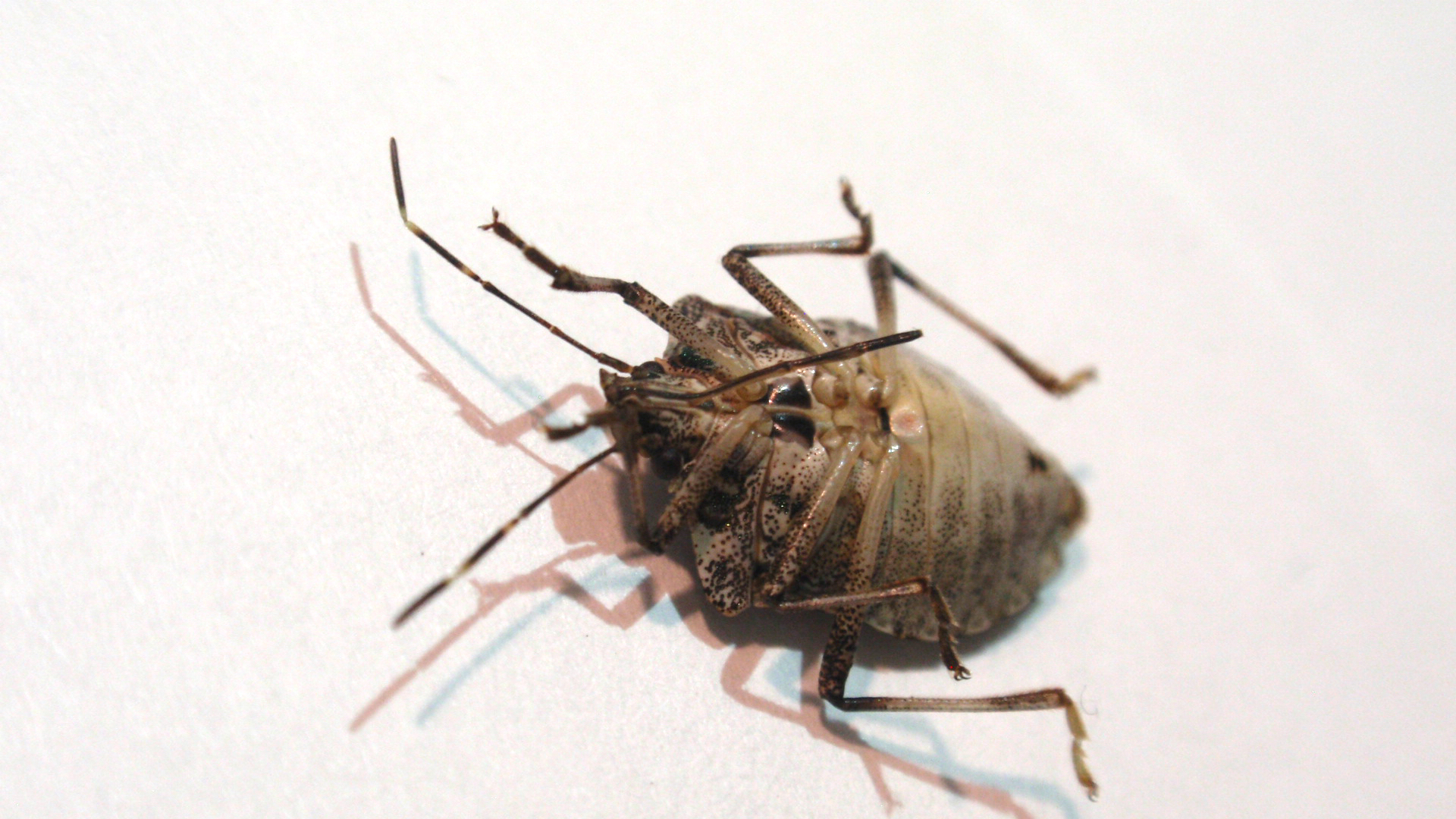
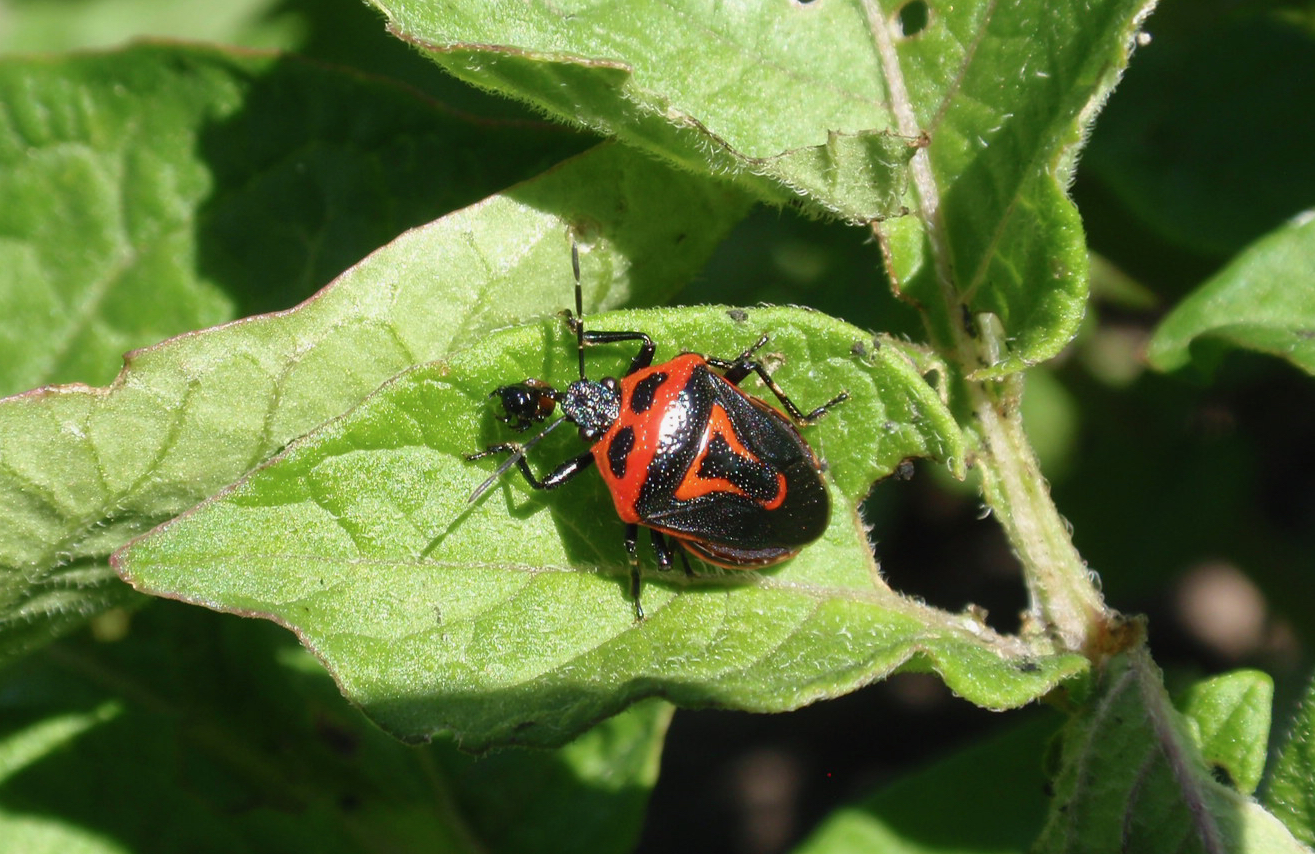
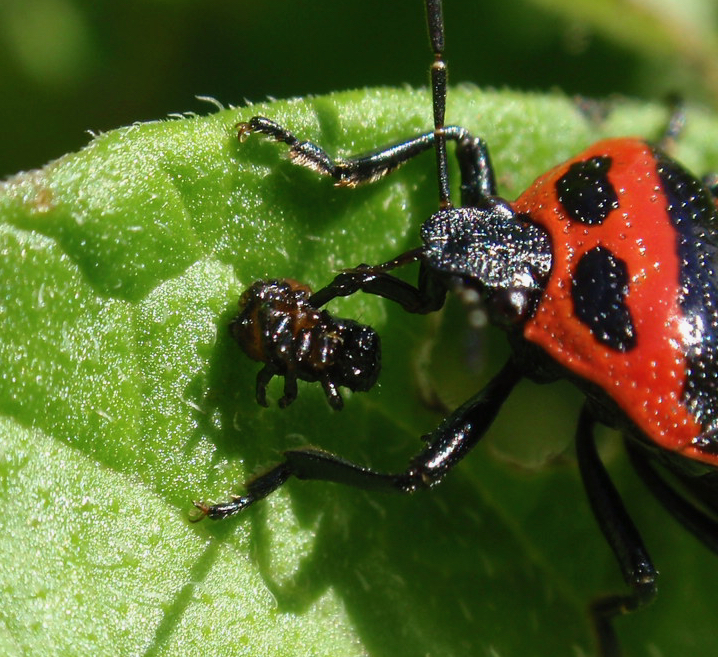
The life cycle of a stink bug
Stink bugs begin their lives in a barrel-shaped egg roughly the diameter of a pinhead (Photo 5). Depending on the species, the eggs can be a variety of colors with variously textured surfaces and in some cases the characteristics of the eggs can be used to identify them to species. For example, the eggs of Podisus sp. bear a crown of spines (Photo 5). When they hatch out of the egg, stink bugs are sometimes brightly colored and bear little resemblance to the adult. As stink bugs grow, they will start to develop wings externally, but these will not be functional until they reach the adult stage.
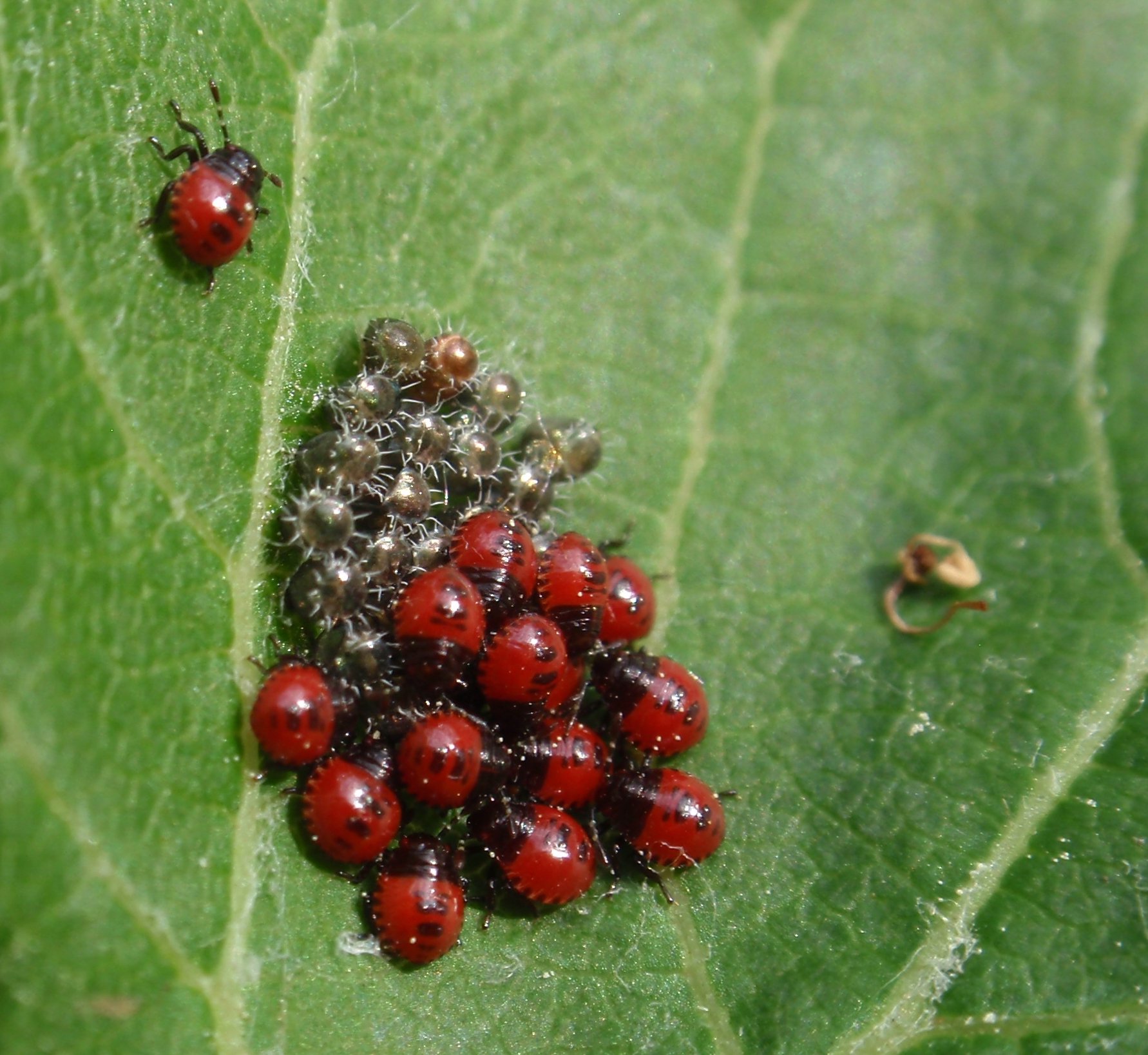
Like all other insects, stink bugs have a rigid exoskeleton, which they must shed in between life stages in order to grow larger. There is a brief period after they shed the old exoskeleton, when the new one has not fully hardened. It is during this teneral phase that they will expand their body before the exoskeleton hardens fully. Teneral insects lack color in their exoskeleton and are often very pale tan or almost entirely white (Photo 6). We do not often see teneral insects. They choose to shed the exoskeleton in sheltered locations because the new exoskeleton is tender and they are easy prey for their natural enemies while in that state.
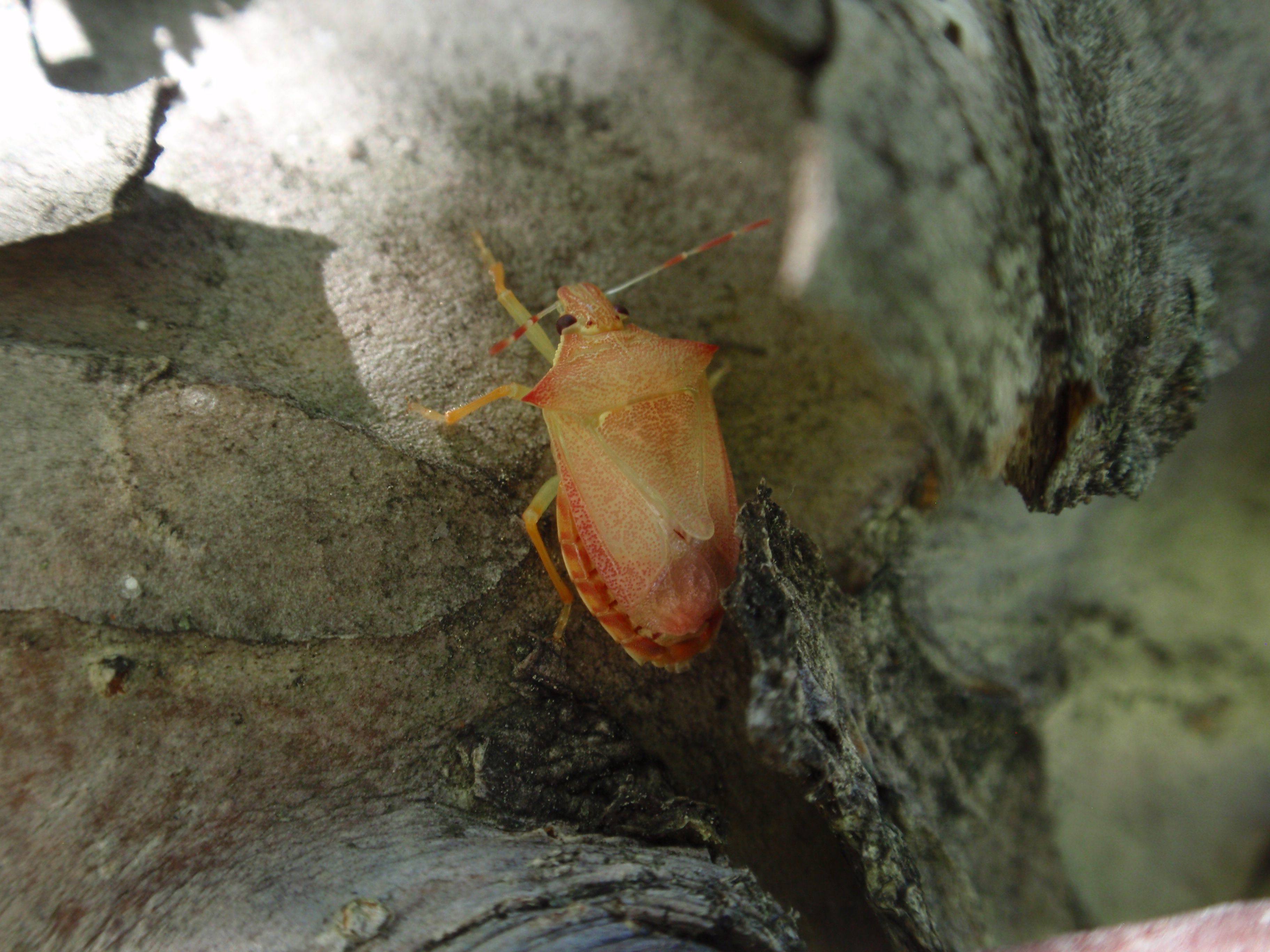
Immature stink bugs come in a variety of bright colors. Once their exoskeleton hardens, they are protected by their defensive chemicals, so they do not need to hide or be camouflaged. In fact, the colors are a way to advertise to would-be predators that they are not a suitable meal. The spots on their backs denote the locations of glands that produce the odorous defensive chemical droplets (Photo 7). Once they become adults, because the wings cover their abdomen, the glands are moved to a location behind their head, on the thorax.
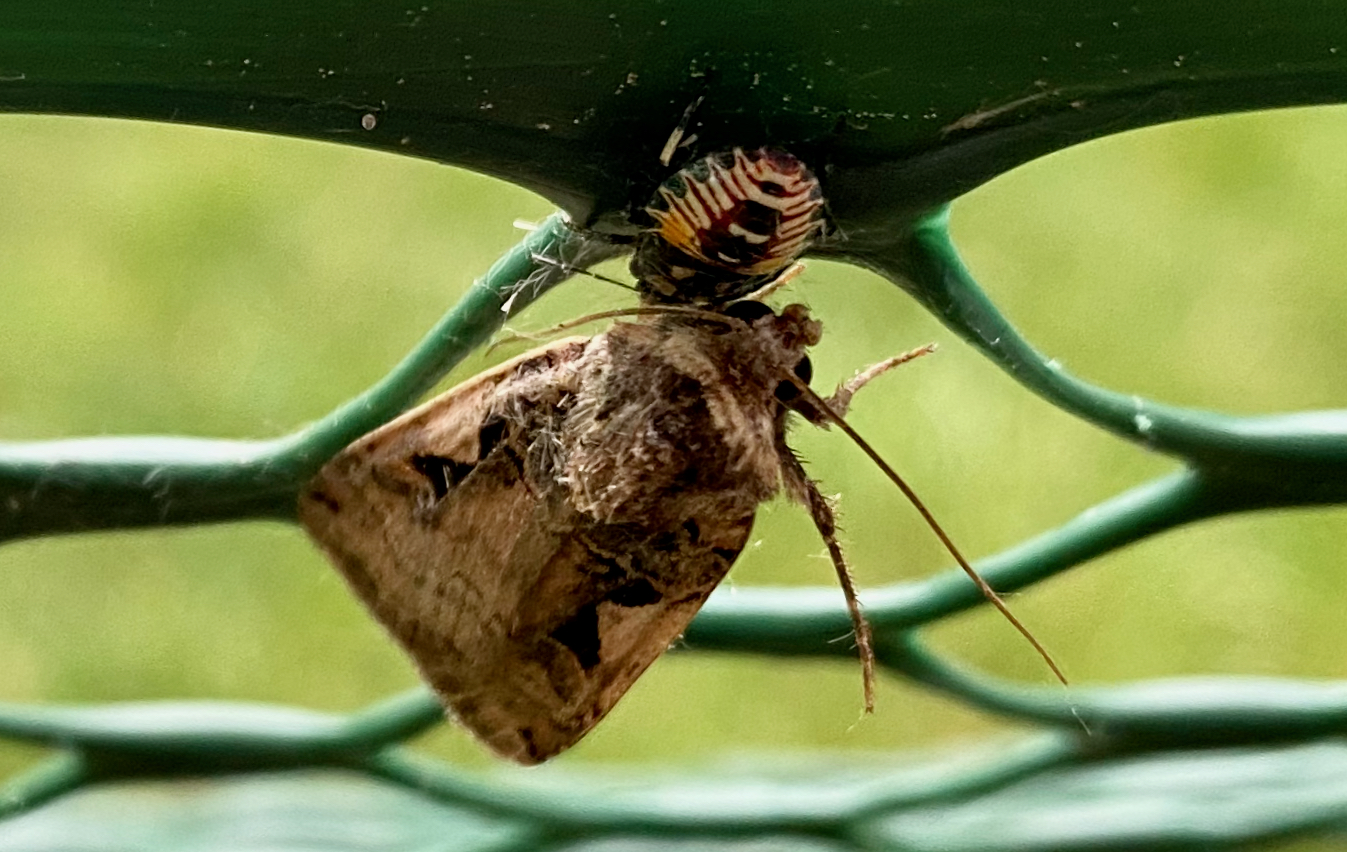
Significance of predatory stink bugs to pest management in Michigan
In Michigan, the majority of stink bugs are harmless or beneficial in the yard and garden, with some important exceptions (see below). Worldwide, the family Pentatomidae contains species representing every part of the spectrum from almost entirely plant feeding (herbivores) to almost entirely predatory. Most species in the family are considered omnivores and will feed on plants if nothing else is available.
In North America, there are several members of the family that damage plants enough to be considered economic plant pests, requiring some form of management. The most troublesome of these in Michigan is the brown marmorated stink bug (BMSB). If you’d like to read more about BMSB, please read this excellent fact sheet, “Managing Brown Marmorated Stink Bugs in Homes & Gardens,” from Michigan State University Extension. For a detailed explanation of how to tell BMSB from other stink bugs, see the Stop BMSB website maintained by the Northeastern IPM Center.
With regard to the beneficial, predatory members of the family, some species are not picky eaters and they will take whatever prey they can catch, even if it is much larger than they are (Photo 7). The most common and infamous of these generalist predators in Michigan are the spined soldier bugs (Podisus spp., Photos 1, 6 and 7). The spined soldier bug (Podisus maculiventris) has been studied for many years for its usefulness in biological control of crop pests. This species is even available for purchase as eggs or nymphs to release in the farm or garden for pest control. Podisus maculiventris can be identified by the presence of sharp points on its “shoulders” and by the darkened strip formed by the wing tips where they come together over its abdomen (Photo 1).
Another common species of predatory stink bug in Michigan is the two-spotted stink bug (Perillus bioculatus) (Photos 3 and 4). These stink bugs are much pickier eaters. Their favorite prey is the larva of the Colorado potato beetle (Leptinotarsa decimlineata), but they will feed on other beetle larvae and adults as well as caterpillars.
Both species have the potential to contribute to pest control in our gardens and landscapes. Conservation of these and other predatory insects in your yard can be accomplished by reducing insecticide use or choosing pesticides that are less harmful to beneficial insects. Adding a diversity of flowering plants can also help by providing year-round shelter and food for these predators.



 Print
Print Email
Email





